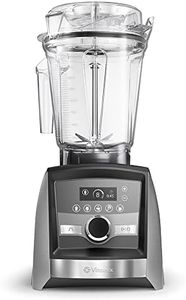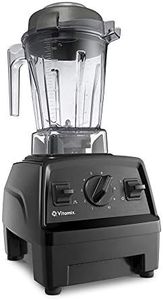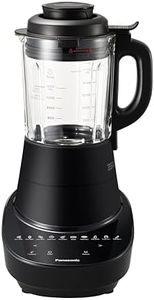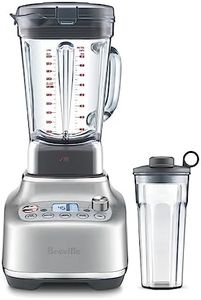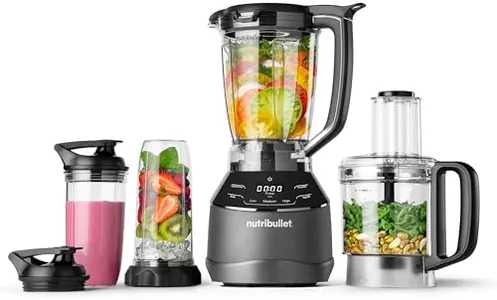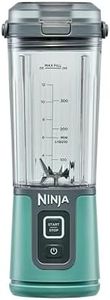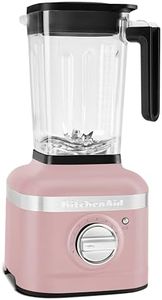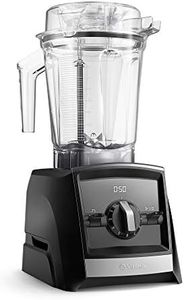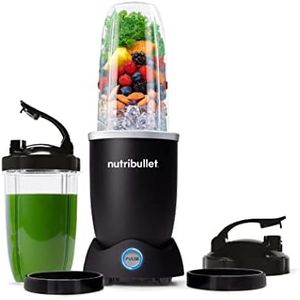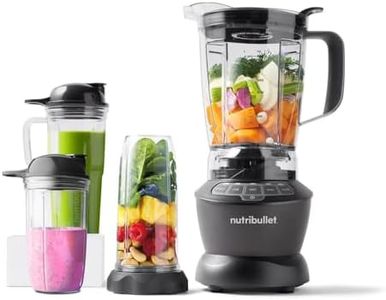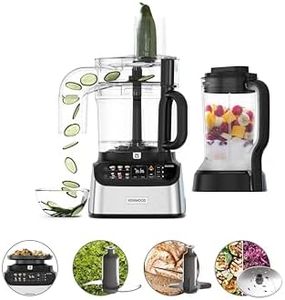We Use CookiesWe use cookies to enhance the security, performance,
functionality and for analytical and promotional activities. By continuing to browse this site you
are agreeing to our privacy policy
10 Best Blenders
From leading brands and best sellers available on the web.Buying Guide for the Best Blenders
Choosing the right blender can make food preparation faster, easier, and more enjoyable, whether you’re making smoothies, soups, or sauces. When looking for a blender, it’s important to consider what you plan to use it for most often, as different models offer various features and capabilities. Understanding the key specifications will help you find a blender that fits your needs, making your time in the kitchen both more productive and satisfying.Power (Wattage)Power, measured in watts, shows how strong the blender's motor is. This is important because a more powerful blender can handle tougher ingredients like ice, frozen fruit, or fibrous vegetables without struggling or leaving chunks behind. Blenders with lower wattage, usually under 500 watts, are suitable for simple tasks like blending soft fruits, making milkshakes, or mixing protein drinks. Mid-range blenders, around 500–900 watts, handle everyday kitchen tasks such as soups and smoothies with a mix of fresh and frozen produce. High-powered blenders, above 900 watts, can fine-puree tough ingredients, crush ice, and even make nut butters or hot soups. Choose based on how often you blend hard or frozen ingredients; if you mostly make smoothies from soft fruits, a moderate power is enough, but for more versatility and tougher jobs, higher wattage is better.
CapacityCapacity tells you how much the blending jar can hold. This matters because it determines if you can make just one serving or enough for a family. Blenders typically range from single-serve (about 0.3–0.7 liters) to medium (1–1.5 liters) to large capacity (2 liters or more). For single-person use or quick shakes, a small personal blender is practical and easy to store. For couples or families, a larger jar makes it possible to prepare bigger batches in one go, saving time. Think about how many servings you often need: choose a blender with a capacity that fits your usual batch size without being too bulky for your kitchen.
Speed Settings and ProgramsSpeed settings let you control how fast the blades spin, and some blenders also have preset programs for items like smoothies, ice crushing, or soup. More speed options give you flexibility for different recipes, from gentle mixing (for salsas or chunky soups) to high-speed blending (for purees and smoothies). Basic blenders might have only two speeds (low and high), while others offer multiple speeds and even auto programs that make blending specific recipes easier. If you want simplicity, two or three speeds can be enough, but if you enjoy experimenting with a variety of recipes, blenders with more settings or programs will help achieve the textures you want.
Blade Design and MaterialBlade design and the material they are made from affect blending efficiency and durability. Blades made from stainless steel are standard because they resist rust and stay sharper longer. The number and shape of the blades can influence how well the blender tackles tough ingredients, ensuring even blending and minimizing unblended chunks. If you like to prepare thick mixes or crush ice regularly, look for strong, multi-level blades. Generally, for everyday use, most blenders with stainless steel blades are sufficient, but for tougher tasks, blades designed specifically for crushing or heavy-duty blending are best.
Ease of CleaningHow easy a blender is to clean affects how likely you are to use it regularly. Some blenders have dishwasher-safe parts, while others require hand washing. Models with removable blades or self-clean settings can make cleaning up simpler and safer. If you’re usually short on time or don’t like dealing with awkward spaces, look for blenders with detachable blades and dishwasher-safe jars and lids. Simpler designs with fewer crevices also tend to be easier to clean. Choose according to your cleaning preferences and how frequently you plan to use the blender.

